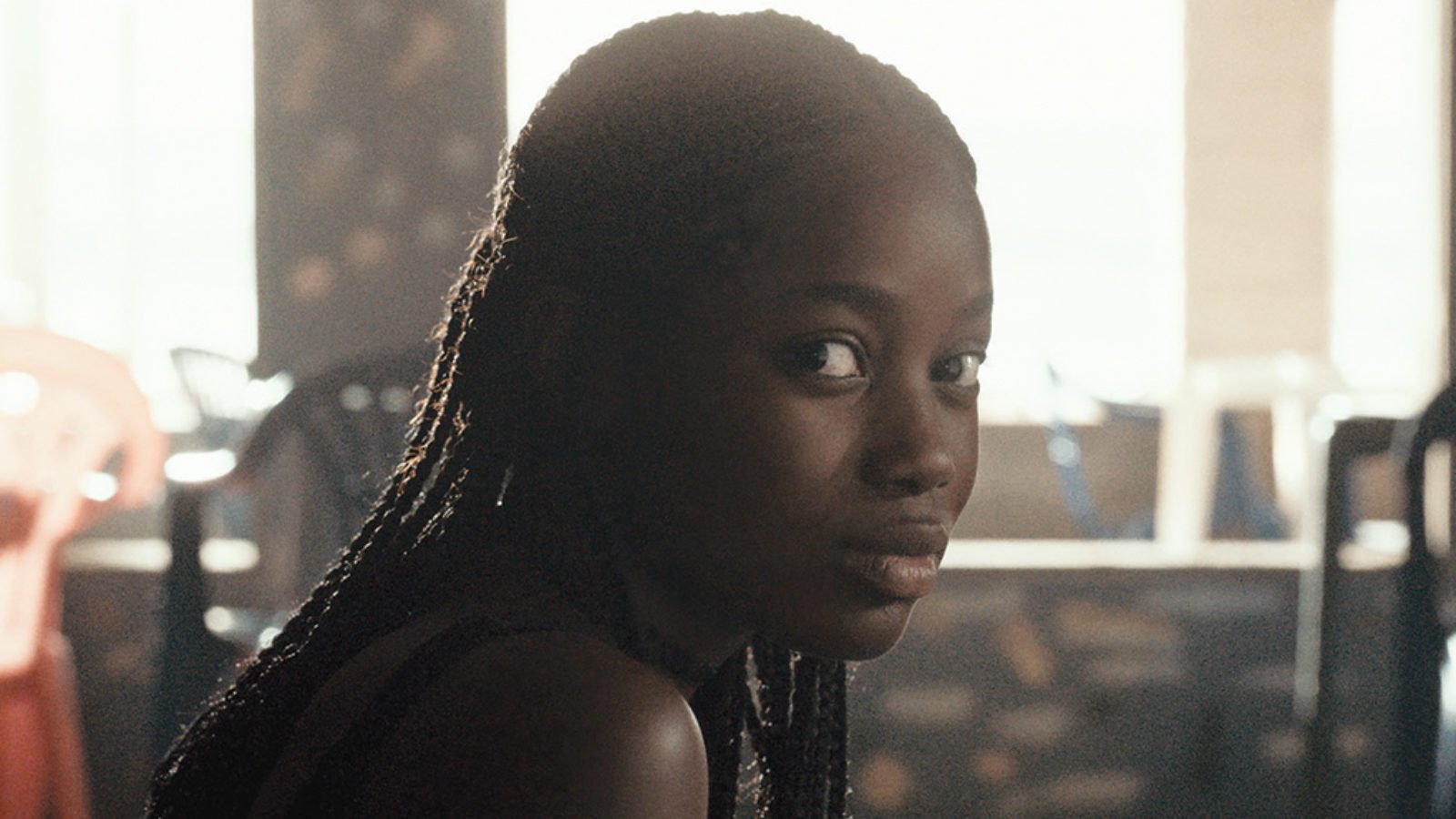
The appearance of Mati Diop’s first feature, Atlantics, in the rarefied atmosphere of the Cannes competition brought with it a sense of occasion and history. It has lately not gone unnoticed that the gatekeepers of many major festivals have not exactly rushed to include women or filmmakers of color, or for that matter, emerging voices—it is rare for a young director (Diop is 37) to vault immediately into the Cannes pantheon. For anyone paying attention, though, the unusual degree of anticipation surrounding this long-awaited debut was not about what Diop represents but what she has accomplished: this is a filmmaker who has, in no uncertain terms, announced herself as a major talent, with a series of short and medium-length films—Atlantiques (2009), Snow Canon (2011), Big in Vietnam (2012), A Thousand Suns (Mille soleils, 2013)—that add up to a distinctive and already formidable body of work.
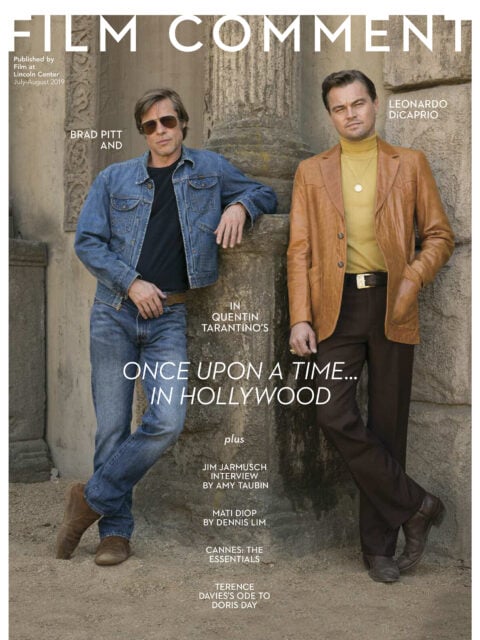
Atlantics, a deserving winner of the runner-up Grand Prix at Cannes, synthesizes the intoxicating moods of Diop’s previous work into an oneiric fable of migration and transmigration—suspended between realism and fantasy, the living and the dead, here and elsewhere. If there is one constant in Diop’s otherwise restless cinema, it is the notion of the in-between: the paradoxical conditions of exile and displacement as experienced physically and psychically; the push-pull tension of being in one place while preoccupied with “the life far away,” as a character’s tattoo in Big in Vietnam reads. In-betweenness also describes the formal qualities of Diop’s films, which mingle unpredictable ratios of documentary and fiction, resulting in hybrid narratives where, as she has put it, “nothing is true and nothing is false.”
Many first noticed Diop as an actor in Claire Denis’s 35 Shots of Rum (she has also appeared in Antonio Campos’s Simon Killer and Matías Piñeiro’s Hermia & Helena), and there is in her work an unmistakable kinship with Denis’s cinema: its sensuality, its ease with bodies, its openness to desire. But Diop could be just as usefully grouped with a loose cohort of filmmakers in their thirties—among them Eduardo Williams and Gabriel Abrantes—who also attended the French art school Le Fresnoy and have redefined the traditional limitations of short-form filmmaking as opportunities for freedom. As different as they are from one another, Diop’s shorts all explore the possibilities of truncation and reduction, revel in ellipsis and enigma, seek out new structures and shapes for storytelling.
The 15-minute Atlantiques, which Diop made at Le Fresnoy, inaugurates the biracial filmmaker’s inquiry into the reality and the idea of Senegal, her father’s ancestral home. Born and raised in Paris, Diop is the niece of the filmmaker Djibril Diop Mambéty; her father is the jazz musician Wasis Diop. Atlantiques emerged in the wake of the so-called pirogue phenomenon of 2005 and 2006, which saw thousands of young Senegalese men braving the hazardous sea journey to Europe, their mission summed up by a Wolof slogan, Barca mba barzakh, that translates as “Barcelona or death.” The “migrant crisis,” subject of countless films in the past decade, emerges here not as a political issue but a state of mind, even as Diop gets across the stark underlying socioeconomic facts.
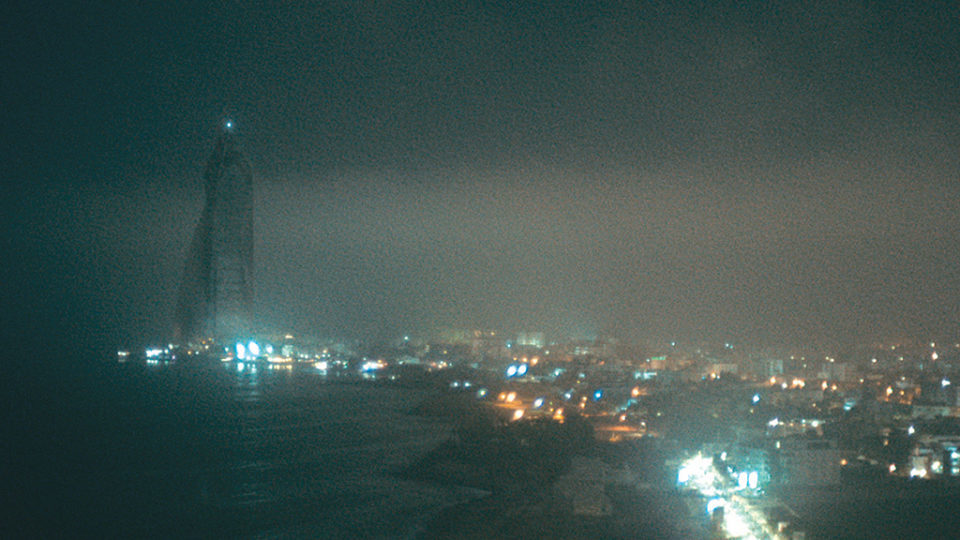
Atlantics (Mati Diop, 2019)
Around a nighttime fire on the beach, an unseen ocean roaring behind him, a young man named Serigne tells his friends about his experiences on a pirogue (a wooden fishing boat): the physical pain of being pummeled by winds and waves; the dreams of home and the hallucinations of fish-men; the absolute certainty that he would do it again. Cut to day and a shot of tombstones, which reveals Serigne’s date of death. Is this a flash forward or was his testimony—to which we later return—from beyond the grave? Diop further scrambles our sense of time with on-screen text about a “nightly invader” that strikes “during deep sleep,” inducing “the most burning desire to flow into the ocean.” This account turns out to be by survivors of the 1816 Méduse shipwreck off the Mauritanian coast, the aftermath of which inspired the famous Théodore Géricault painting The Raft of the Medusa. Despite the availability of high-resolution formats, Diop shot Atlantiques on low-def video that hovers on the threshold of visibility and the verge of disintegration, matching the precarity that Serigne is describing. The final images are close-ups of a rotating Fresnel lens, its cyclical movements and refracted light mirroring the film’s sly formal operations.
Co-written with Judith Lou Lévy, who would go on to be a producer of Diop’s feature, Snow Canon attempts something like a conventional narrative, detailing an encounter between Vanina (Nilaya Bal), a moody teenager left alone in the French Alps while her parents attend a funeral, and her new American babysitter, Mary Jane (Nour Mobarak). As Vanina’s boredom shades into curiosity and desire, the girls’ interactions take on elements of role-play. This quintessential rite of passage is all the more intense for unfolding within a sealed-off environment, a chalet with its blinds perpetually lowered, its rooms occasionally flooded with colored light. Diop juxtaposes this intimate, temporally bound drama with a timeless, indeed geological, one, cutting repeatedly to the spectacular mountain terrain outside, a physical landscape that comes to stand in for an interior space.
With Big in Vietnam, co-written with the filmmaker Thierry de Peretti, Diop investigates not just the dream but also the physicality of movement and escape. She returns here to the theme of exile, this time from the perspective of a French-Vietnamese filmmaker, Henriette (Henriette Nhung), who is in the middle of shooting an adaptation of Choderlos de Laclos’s Les Liaisons dangereuses in a Provençal forest. When her Valmont abruptly walks off the set, Henriette follows suit. Wandering the streets of Marseille, she’s drawn by the strains of familiar music to a Vietnamese restaurant, where she discovers an ad hoc community and joins a countryman in an impromptu karaoke duet. The characters remain in perpetual, vaguely somnambulist motion: the missing actor continues his progress through the woods, and Henriette and her new friend keep walking—observed from a Ferris wheel as they thread through sunbathers on the beach, as if compelled by a larger force toward the infinity of the horizon.
A less confident director would have shied from tackling a weighty family legacy so early in her career, but with A Thousand Suns, Diop confronts her uncle’s masterpiece Touki Bouki (1973) head-on. The action unfolds before and after an outdoor Dakar screening of Touki Bouki, held in the presence of that film’s lead actor Magaye Niang—still herding cattle, clad in cowboy boots and head-to-toe denim, and given proper movie-star treatment by Diop, who introduces him to the strains of Tex Ritter’s High Noon theme. The day nonetheless brings indignities and regrets: on his way to the event, Magaye gets into a squabble with a young cab driver, who demonstrated against then-President Abdoulaye Wade and who faults the older man’s generation for complacency. The kids at the square refuse to believe he’s the guy up on screen. He reunites with his friends, among them Diop’s father, who wonder why Magaye—whose Touki Bouki character longs for an idealized France never left Dakar (“Touki means to travel and you’re stuck!”).
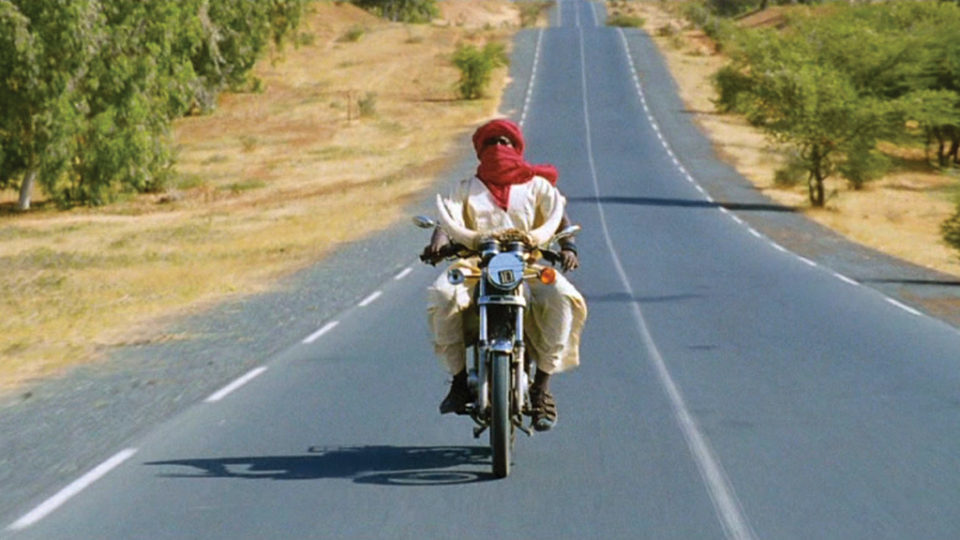
A Thousand Suns (Mati Diop, 2013)
The confrontation with the past prompts Magaye to phone his long-lost co-star, Mareme Niang, who now lives in Alaska. Diop facilitates their reunion with a brilliant sleight of hand, transporting Magaye to a snowy landscape of the mind. As Magaye and Mareme’s conversation turns more ruminative, Diop weaves in these immortal lines from James Baldwin’s Giovanni’s Room: “You don’t have a home until you leave it, and then, when you have left it, you never can go back.” At once tribute and sequel, A Thousand Suns engages in a time-traveling conversation with Touki Bouki, revisiting and expanding the universe of Mambéty’s landmark film.
The tricky feat that Diop carries off to perfection in Atlantics is to balance the richly suggestive ambiguity of her shorts—their preference for atmosphere and oblique incident—with the narrative requirements of a feature film. (Somewhat confusingly, the original French title is Atlantique, though perhaps the multiplicitous names, suggestive of shifting subjectivities, are appropriate.) Diop’s feature returns to the scenario of her short from 10 years ago, but this time assumes the perspective of those left behind. Her young heroine, Ada (Mama Sané), about to enter an arranged marriage with the wealthy, aloof Omar, is in love with a construction worker, Souleiman (Ibrahima Traoré). Days before the wedding, Ada learns that Souleiman and his friends—all owed months of back pay—have left by sea for Spain. On the night of the ceremony, just as a friend tells Ada that Souleiman has been spotted back on land, a fire mysteriously breaks out at Omar’s apartment, leaving a smoldering hole in the marital bed…
Given the dichotomy of presence and absence running through her work, it makes sense that Diop’s first feature would be a ghost story. Already in Atlantiques the short, the boys around the fire seem like spectral figures: “I’m here talking, but my mind is elsewhere,” Serigne says. A fever spreads through the Dakar of Atlantics, infecting Ada’s female friends as well as the police inspector, Issa (Amadou Mbow), who has been tasked with investigating the arson. The boys, lost presumably to a watery grave, have returned to possess the ones they love and to settle old scores—or in Issa’s case, to give Ada a chance to bid farewell to Souleiman, a necessary step toward self-determination. Diop handles the supernatural turn with matter-of-fact understatement, aided by Fatima Al Qadiri’s otherworldly electronic score, and nodding to the local belief in djinn, spirits that can take human form.
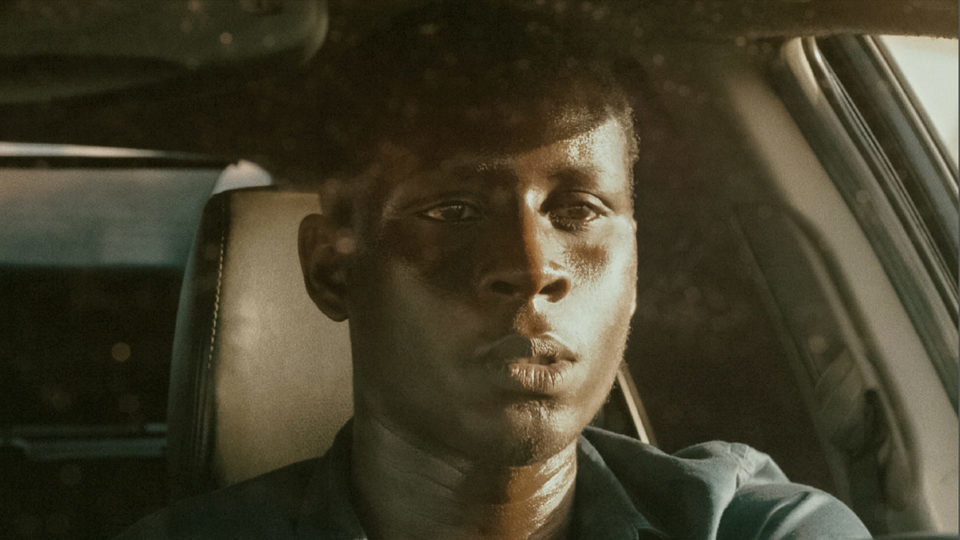
Atlantics (Mati Diop, 2019)
For all the fantastical flourishes, Diop and her excellent cinematographer Claire Mathon (who also shot Alain Guiraudie’s Stranger by the Lake and Céline Sciamma’s Portrait of a Lady on Fire) retain a documentary specificity in their depiction of contemporary Dakar. The heat, dust, and clamor of the city, palpable in A Thousand Suns, is even more pronounced in Atlantics, which finds much texture and life in its variegated settings: abandoned buildings, beach clubs, brand-new constructions, modest teenage bedrooms. The one digitally composited invention on Diop’s part is a futuristic skyscraper, a hulking intrusion on the shore and skyline inspired by a project known as the Gaddafi Tower, a proposed collaboration with the former Libyan leader that never came to pass. Diop is also attentive to the tensions of class and religion as they play out among contemporary Senegalese youth, touching on the conflicts between Ada’s more traditional friends, like the hijab-wearing Mariama, and the more liberated and materialistic ones, like Dior, a barmaid at the oceanside nightclub that proves to be a pivotal location.
Fire and water loom large in Diop’s cinema of the elements, but there is no force stronger than the inexorable pull of the ocean. “Beware, the sea has no friends,” someone tells Mayage in A Thousand Suns as he ventures too close to the water (his character in Touki Bouki, we recall, was forever looking over the cliffs and out to sea). Although repeatedly invoked, the ocean is seen only once in Atlantiques, the short. In Atlantics, the feature, it is inescapable, with much of the action transpiring on the water’s edge, and screen-filling shots of the Atlantic serving as frequent punctuation, as the jagged Alps did in Snow Canon. The ocean appears at various times of day, by turns becalmed and roiling, a pathway and a graveyard. In a recurring visual motif, it swallows up the sun, as the moon rises to exert its own influence on the tides. Alert to the cosmic cycle governing the film—and us all—we are reminded of Serigne’s cry in Atlantiques: “Look at the ocean, it has no borders.” The words are both caution and promise, speaking at once of death and of the life far away.